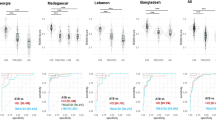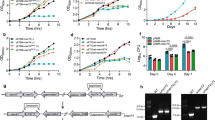Abstract
THE bacteriological diagnosis of specimens for presence of Koch's bacilli and testing of compounds for their antitubercular properties are mainly restricted to guinea pigs and rabbits ; mice are naturally resistant to tuberculous infections, and lesions produced after injecting massive doses of tubercle cultures differ from those found in susceptible animals. We have now been able to confirm that the Syrian or golden hamster (Cricetus (Mesocricetus) auratus Waterhouse), after intramuscular or intraperitoneal infections with a human or a bovine strain, develops anatomical lesions similar to those seen in guinea pigs.
This is a preview of subscription content, access via your institution
Access options
Subscribe to this journal
Receive 51 print issues and online access
$199.00 per year
only $3.90 per issue
Buy this article
- Purchase on SpringerLink
- Instant access to full article PDF
Prices may be subject to local taxes which are calculated during checkout
Similar content being viewed by others
Author information
Authors and Affiliations
Rights and permissions
About this article
Cite this article
UNGAR, J. The Golden Hamster as a Test Animal for Tubercular Infection. Nature 150, 432 (1942). https://doi.org/10.1038/150432a0
Issue date:
DOI: https://doi.org/10.1038/150432a0
This article is cited by
-
Der Goldhamster als Versuchstier in der mikrobiologischen Laboratoriumspraxis
Zeitschrift für Hygiene und Infektionskrankheiten (1951)



